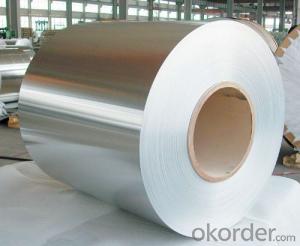Aluminum foil, a common household item, is often overlooked in terms of its environmental impact. From its production to disposal, the process has far-reaching consequences that many are unaware of. Let’s dive into the journey of aluminum foil, from the extraction of bauxite to the final product we use in our daily lives.
The Beginning: Bauxite Extraction
The story of aluminum foil begins with bauxite, an aluminum-rich ore. Bauxite mining is a resource-intensive process that requires large amounts of land and energy. The extraction process can lead to deforestation and habitat destruction, displacing the native flora and fauna. Moreover, the chemicals used in the refining process can contaminate nearby water sources, affecting aquatic life and the communities that rely on these water bodies for their livelihoods.
Energy Intensive Production
Once the bauxite is extracted, it undergoes a series of processes to produce aluminum. This includes the Hall-Héroult process, which is energy-intensive and accounts for a significant portion of the overall carbon footprint of aluminum production. The process involves the electrolytic reduction of alumina in a solution, requiring vast amounts of electricity. In regions where electricity is generated from fossil fuels, this contributes to greenhouse gas emissions.
Environmental Concerns of Manufacturing
The manufacturing of aluminum foil also poses environmental concerns. The production facilities can emit pollutants into the air, contributing to air pollution. Additionally, the waste generated during the manufacturing process can be harmful if not properly managed. Proper waste management systems must be in place to ensure that the waste does not end up in landfills or waterways, where it can cause further environmental harm.
Single Use and Waste Generation
Aluminum foil is often used for a single purpose and then discarded. This single-use nature contributes to the generation of a significant amount of waste. While aluminum is recyclable, not all of it is recycled due to various reasons such as lack of recycling facilities, consumer habits, or contamination during the recycling process. The unrecyclable aluminum ends up in landfills, taking up space and potentially leaching harmful chemicals into the environment.
Recycling Challenges
Recycling aluminum foil is not without its challenges. Contamination from food residues and other materials can make the recycling process more difficult. Furthermore, the thin nature of aluminum foil makes it prone to getting tangled and mixed with other recyclables, which can hinder the sorting process. Despite these challenges, recycling aluminum saves energy and resources compared to producing new aluminum from bauxite.
Alternatives to Aluminum Foil
As consumers become more environmentally conscious, alternatives to aluminum foil are gaining popularity. Reusable silicone mats, parchment paper, and wax paper are some of the options that can be used in place of aluminum foil. These alternatives can help reduce the demand for aluminum foil and its associated environmental impacts.
The Role of Consumers
Consumers play a crucial role in mitigating the environmental impact of aluminum foil production. By choosing to recycle, using alternatives, or reducing the amount of aluminum foil used, individuals can make a difference. Educating oneself about the environmental impact of everyday products is the first step towards making more sustainable choices.
Conclusion
The production of aluminum foil, while providing convenience in our daily lives, has a significant environmental impact. From the extraction of bauxite to the manufacturing process, energy consumption, waste generation, and recycling challenges, each step of the process contributes to the overall footprint. As we become more aware of these impacts, it is essential to consider the choices we make and the alternatives available to us. By making informed decisions, we can collectively work towards reducing the environmental impact of aluminum foil production.

